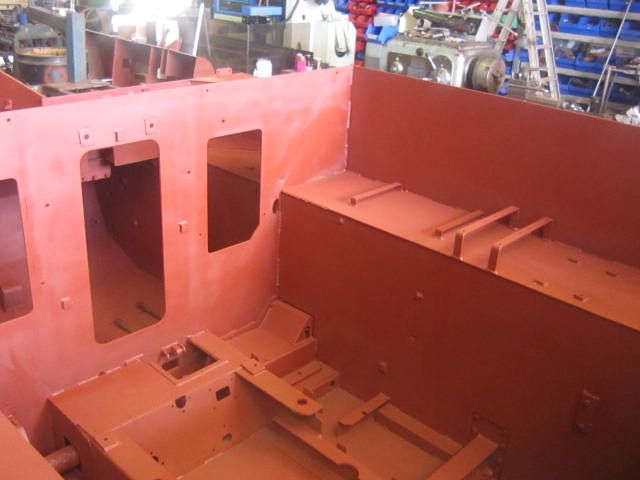
 |
|
|
|
#1
|
|||
|
|||
|
Is this a test shot mark on the right hand inside lower hull ? I notice this is on other carrier photos I've seen on the forum they look to be all in the same spot . Nothing on the lift side of the hull just wondering .. Dale
 
__________________
1944 GPW and Bantam trailer Last edited by Dale Jordan; 25-05-13 at 01:31. |
|
#2
|
||||
|
||||
|
Hi Dale - you will see on most Carriers these dimples. This was their method of quality control where .303 shots were fired at the hull to test the bullet proofing of the metal.
Bob
__________________
Chevrolet Blitz Half-Track Replica - Finished and Running Ford F15 - unrestored Ford F15A X 2 - unrestored Website owner - salesmanbob.com |
|
#3
|
|||
|
|||
|
Thanks Bob . If It failed the test , I wonder if the scraped the complete hull or just replaced the armor in that area .. Dale
__________________
1944 GPW and Bantam trailer |
|
#4
|
|||
|
|||
|
Hello Dale,
From what I've worked out the steel was test shot before the plate was fitted to the carriers, probably during manufacture whilst the plate was just flat, as I have seen test marks where it would be impossible to do once the hull was welded together. Regards Justin.
__________________
Go Kimi! Met Gas LP2A carrier Hull no.2753- Progressing slowly. |
|
#5
|
|||
|
|||
|
How interesting. This "test shot" business ... is this a country specific quality assurance method?
I am intrigued by the thought that a rifle round was discharged against a hull plate, and the same plate eventually ends up as a portion of an assembled hull. Is this an urban legend or factual? There are regularly spaced hardness standard testing marks on Canadian light armour plate as well as the more commonly visible and commented on straightening marks. The American owned company responsible for heat treating and straightening 45,000 tons of wartime production Canadian light armour plate stamped their company logo into the plate. Some side plates on Canadian U.C.'s also display a four digit serial number. As for an assembled Canadian production vehicle showing hardeness testing tool marks attributed to a fired rifle round, or a documentation trail to support the theory, that is quite elusive. Bob, Justin, can you elaborate? |
|
#6
|
|||
|
|||
|
I think I have to concur with Micheal on this one, unless someone comes up with some other evidence. I think this is an old wives tale.
I have used left over carrier armour as targets at shooting matches. In one case, hundreds of rounds of all calibers were fired at the front armour off a mk1. The Boyes rifle penetrated as to be expected, and one smaller round penetrated through the armour near where the vision slot was (I'll assume that the cutting process for the slit weakened the armour very locally) but other than those, all any of the small arms did was scratch the paint. I have also noted the dimples on the right side armour to be very evenly laid out. So, as Micheal said, does anybody have documentation as to what exactly the hardness test was? |
 |
|
|